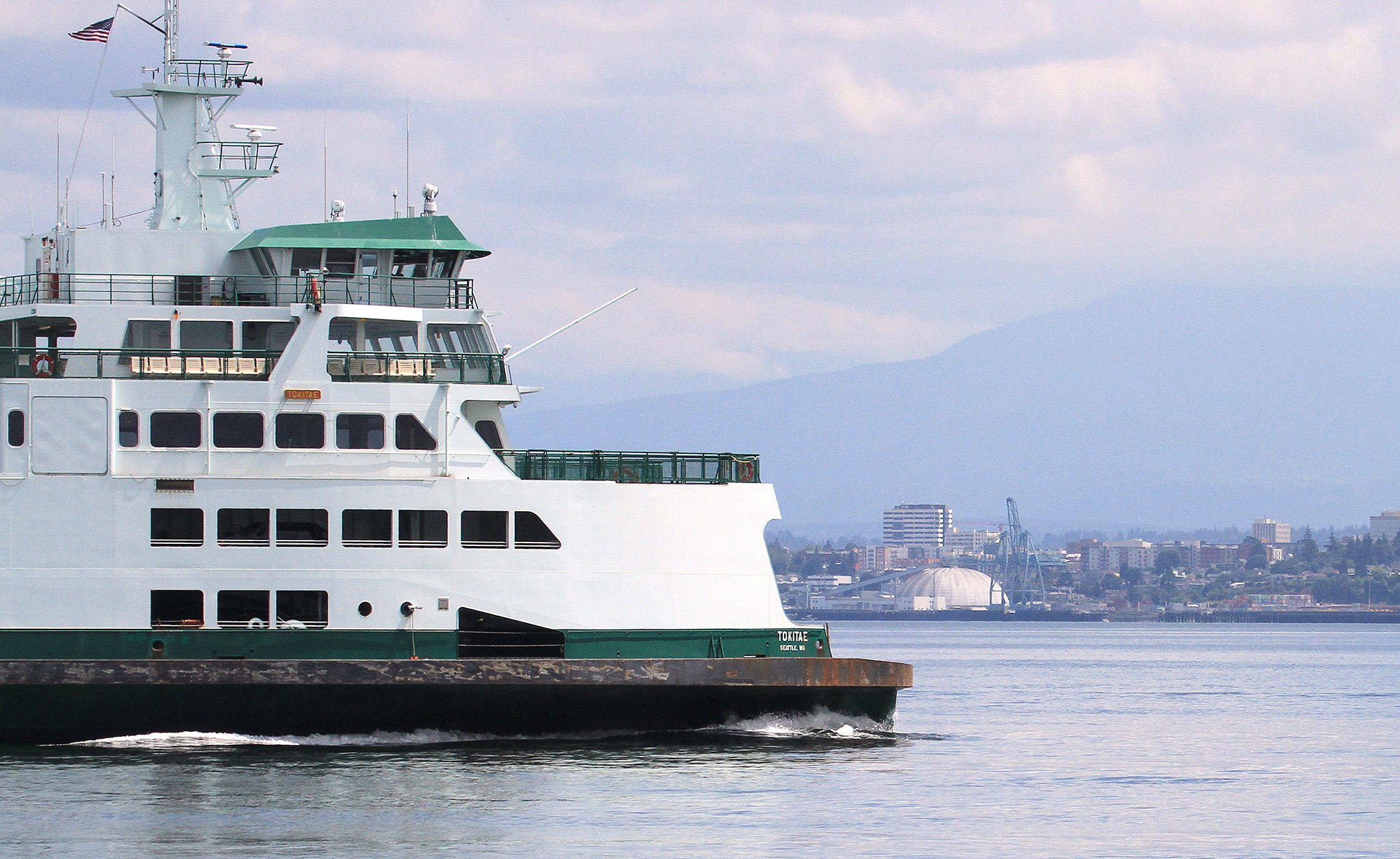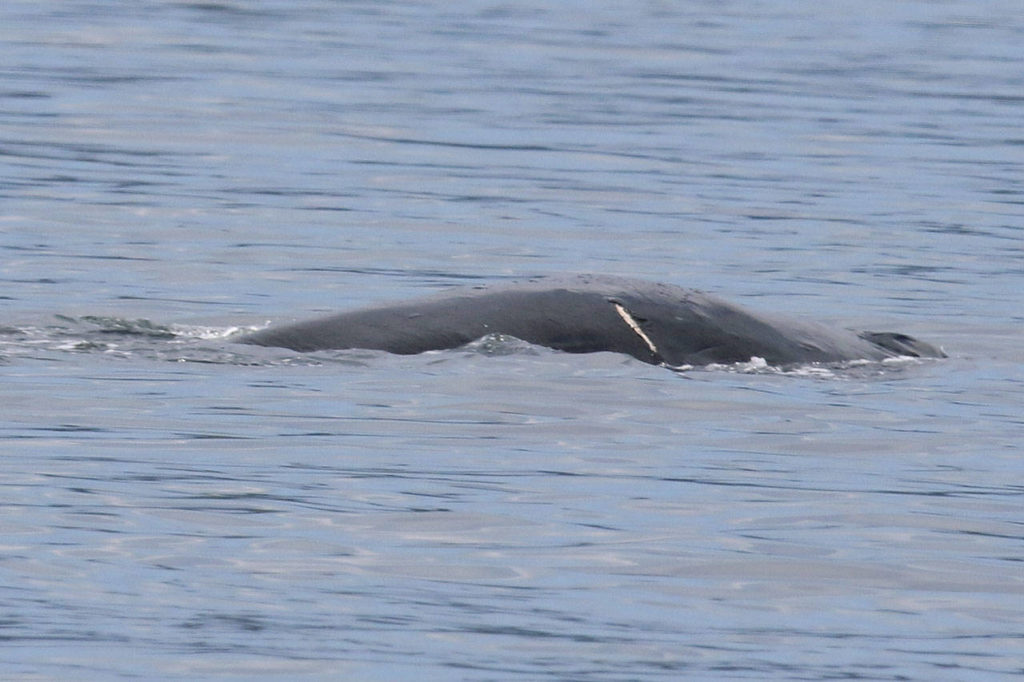MUKILTEO — The humpback whale struck by a Washington state ferry on Monday has been tentatively identified as a 3-year-old named Chip.
Researchers based the findings on previous sightings and photos of the whale’s fluke, dorsal fin and pattern of tubercles on the whale’s head.
As of Thursday, the injured whale had not been sighted, alive or dead. The nature of the strike and his apparent injuries indicate it was fatal, experts said. The young whale’s adult traveling companion was later spotted alone off Whidbey Island’s north bluff.
Monday’s collision happened when the 362-foot ferry Tokitae was about three-quarters of a mile from the Mukilteo terminal during the 20-minute crossing from Clinton on Whidbey Island. Ian Sterling, a spokesman for Washington State Ferries, said the crew wasn’t aware the ferry hit the whale. In May 2019, a state ferry on the Seattle-Bainbridge Island route struck and killed a young humpback whale in Elliott Bay.
Video posted on Facebook by the Pacific Whale Watch Association of Monday’s incident shows the young whale in front of the Tokitae, taking a breath at the surface before vanishing. A photo taken when the whale surfaced shows a gash in its side.
Witnesses on the Puget Sound Express whale watching vessel said the juvenile whale was traveling with a larger whale. Unique markings on both whales were linked to other sightings. The two had been seen together on previous days. The larger whale’s identity has not been determined.
John Calambokidis, a research biologist at Cascadia Research in Olympia, said the pair were part of the Washington-Southern British Columbia area feeding group, comprised of about 1,000 whales.
“They tend to return every year to feed,” Calambokidis said.
Chip mainly had been spotted around British Columbia and might have been a newcomer to south Whidbey Island waters. The pair were sighted in the Strait of Juan de Fuca on July 4.
Chip, also known as BCYuk2015#1, was born in 2017 to mother Smiley, based on photographs over three years by the Marine Education and Research Society, based on Vancouver Island, British Columbia.
Cascadia Research, working with National Oceanic and Atmospheric Administration and other researchers, was able to identify Chip from the Marine Education and Research Society catalog and photos in the days before the ship strike.
“To most people, it seems whales look pretty similar, but just like people they have distinctive characteristics,” said Michael Milstein, a NOAA spokesman.
There are an increasing number of humpbacks in the region, he said.
“We’re seeing those populations get larger and healthier, which is a good thing, but it also comes with some risks because of us driving boats around,” Milstein said. “They are so large they don’t have many predators at that size.”
Calambokidis said certain species are more vulnerable than others. The Elliot Bay fatality involved a humpback from the the same feeding group as Chip.
“Vessel strikes of whales are a serious issue worldwide,” Calambokidis said. “The vast majority of ship strikes of whales go undocumented. Ferries have lots of people on board and run in really populated areas. If this strike had occurred on this whale by a cargo vessel in the Strait of Juan de Fuca and the whale disappeared like this, no one would ever know.”
Susan Berta, co-founder of the Orca Network on Whidbey Island, said she doesn’t fault the ferry system.
“They really do care about the whales. Nobody wants to hit a whale,” Berta said. “They just can’t slam on their brakes or divert course that fast.”
Andrea Brown: abrown@heraldnet.com; 425-339-3443. Twitter @reporterbrown.
Talk to us
> Give us your news tips.
> Send us a letter to the editor.
> More Herald contact information.


























